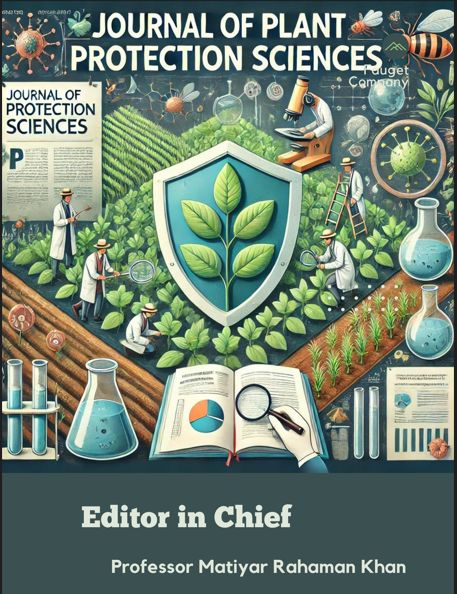Bioefficacy of some indigenous products in the management of okra fruit borers
DOI:
https://doi.org/10.48165/Keywords:
Abelmoschus, armigera, untreatedAbstract
A field experiment was conducted in kharif, 2003 at Main Agricultural Research Station, University of Agricultural Sciences, Dharwad to evaluate the bioefficacy of some indigenous products against okra fruit borers, Earias vittella Fabricius and Helicoverpa armigera Hubner. Different indigenous products like NSKE (5%), GCKE, sweet flag extract (5%), garlic extract (5%), cow dung (10%) and cow urine (10%) were tried individually and in combinations along with endosulfan (0.07%) and untreated control. Repeated sprays of GCKE recorded least number of eggs (1.40 eggs/plant) followed by NSKE (5%) alternated with cow dung 10 per cent (1.71 eggs and cow urine used individually were not effective against the borers and recorded higher fruit damage of 55.70 and 52.10 per cent, respectively. GCKE was significantly superior in reducing the fruit borer damage to the tune of 64.83 per cent with higherbenefit: cost ratio was noticed in endosulfan treatment (15.00) followed by treatment involving NSKE alternated with cow urine 10% (13.00), repeated sprays of GCKE (10) and NSKE alternated with cowdung 10% (7.90).
References
Lakshmanan KK. 2001. Garlic, a natural pesticide. The Hindu, March 1, p. 8.
Peries L. 1985. Cattle urine as a substitute for agrochemicals. In: Natural Crop Protection Based on Local Farm Resources in the Tropics and Subtropics, Langen, Germany, 124 pp.
Pradhan S, Jotwani MG, Rai BK. 1962. The neem seed deterrent to locusts. Indian Journal of Entomology 12: 7-11.
Rahudkar. 1993. Control of pod borer in pigeonpea. Honey Bee 4: 5.
Rankin. 1986. ABC’s of pest management. In: Natural Crop Protection Based on Local Farm Resources in the Tropics and Subtropics, Langen, Germany, 125 pp.
Sadawarte AK, Sarode SV. 1997. Efficacy of neem seed extract, cow dung, and cow urine, alone and in combination, against the pod borer complex of pigeon pea. International Chickpea Newsletter 4: 36-37.
Senguttuvan T, Rajendran R. 2001. Plant products for the control of bhendi fruit borers. In: Proceedings of the Second National Symposium on Integrated Pest Management (IPM) in Horticultural Crops: New Molecules, Biopesticides and Environment, Bangalore, 17-19 October, 2001, pp. 17-18.
Warren MJ. 1989. Compatibility of tactics: An overview. In: Proceedings of the Workshop on Exotic Aphid Pest of Conifers; Aerosis in African Forestry, Edey Odera J and Cook AJW, Food Agricultural Organisation, KFRI, Muguya, Kenya, 3rd June, 125 pp.
The Journal of Plant Protection Sciences. 2019. 1(1): 60-62.

